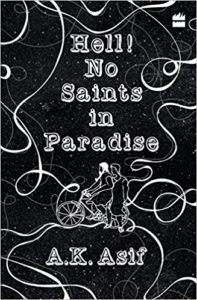What’s going on?
Why the Aryan debate matters and why it should NOT
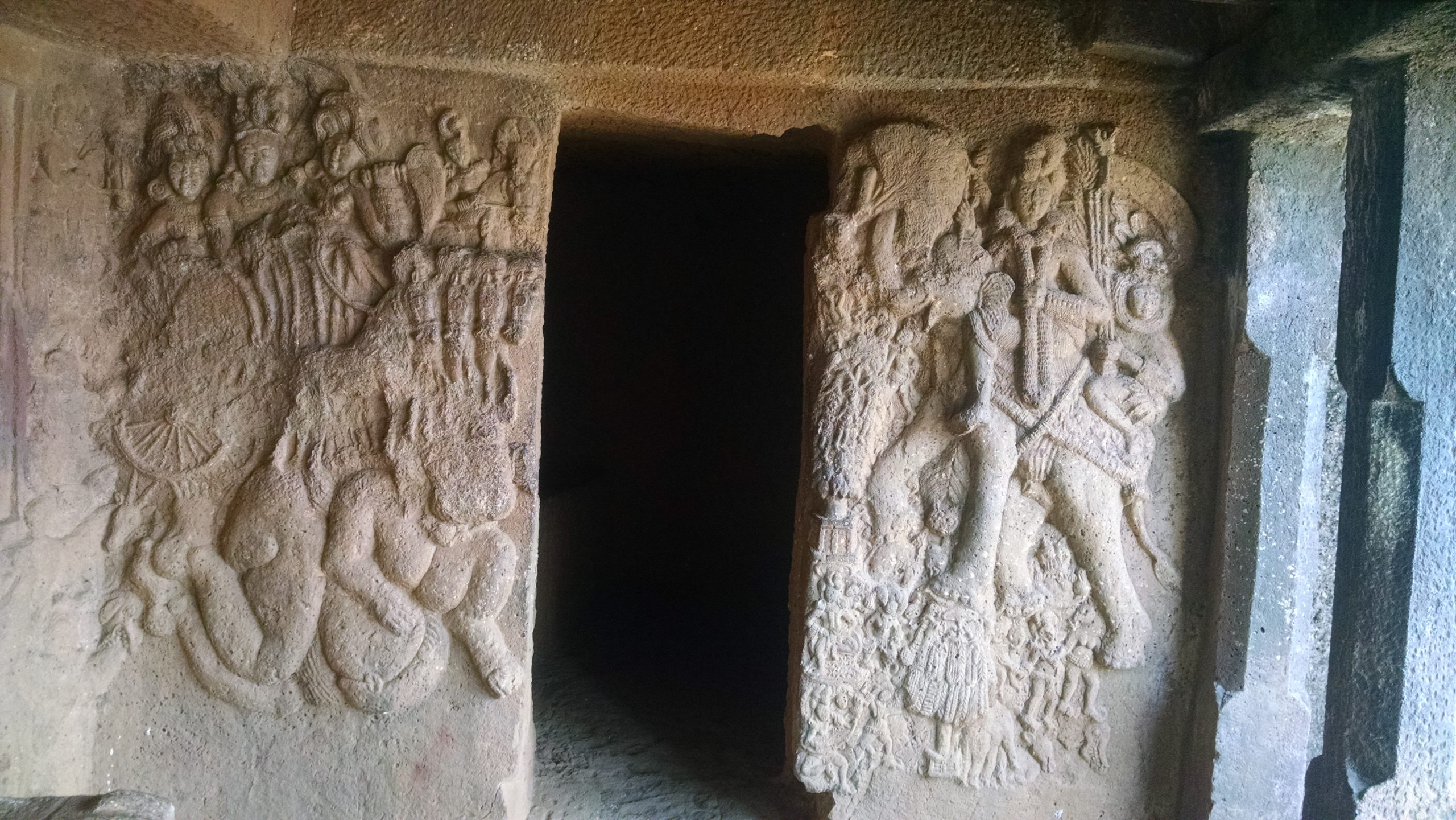
A year after my blog post on the topic of the Aryan invasion, I am revisiting the topic on Brownpundits, not as a query into the historical question but as a question of identity and politics.
The Aryan debate touches a variety of political faultlines in India and hence is not going to be settled anytime soon I presume, yet intellectually I think it is a non-sequitur for most of the alleged issues around which the issue is discussed. Those issues being (not necessarily in order of importance)
- Western colonialism and racism and its converse in India. (Identity)
- The Jati-Varna system and its legacy in India
- Dravidian nationalism
- Islam and Christianity in Modern India.
- Love for native antiquity and religious dogma.
My primary issue with the politics around this issue is that it clearly prevents intelligent and passionate people interested in the topic from pursuing it clear-headedly (Not that researchers don’t get illogically attached to their theories in face of overwhelming evidence). Perhaps the example of Colin Renfrew (Anatolian farmer hypothesis) accepting the Kurgan hypothesis (Marija Gimbutas) after the ancient DNA work came out is an outlier but it is still good to know such examples.
As far as the politics go, it’s fair to state that it’s the Hindutvadis who are at the vanguard of pushback against AIT/AMT (however it’s important to note that there are notable exceptions, and not all Hindutvavadis are invested in this debate). Also some non-Hindutvavadi (especially traditional Hindus and Indians with nativist anti-colonial mindset) are also invested in this debate.
Identity: Western colonialism and racism and its converse in India.
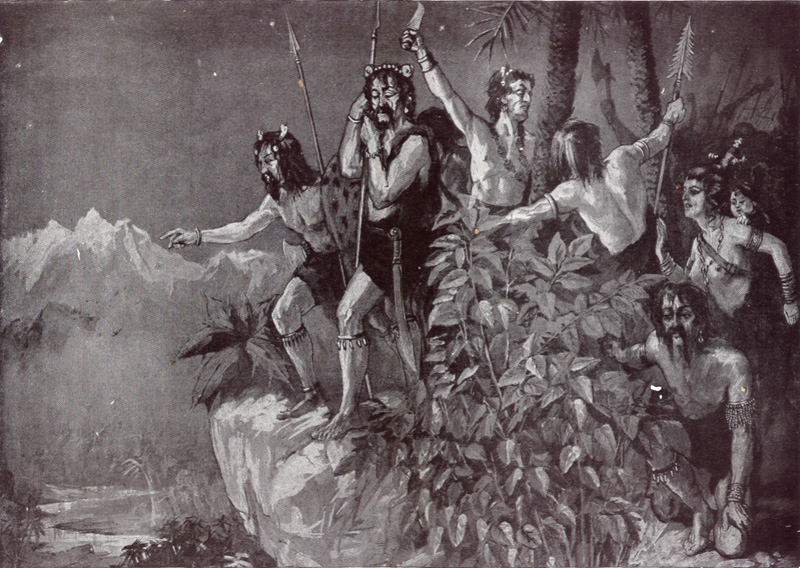
The genesis of the Aryan invasion theory was in the racist notions of white and European superiority – “White horse warriors who spoke a form a proto Sanskrit arrived in the subcontinent and subjugated the dark, stubby-nosed natives of India” (in process civilizing them). The extrapolation of this being – what the British colonizers were doing was just the latest upgrade of civilization being uploaded in the lands of relapsed natives. But then the stunning finds of the IVC began poking holes in this simplistic racist take. Though initially Indra was accused of the destruction of the IVC, later developments in the field acquitted him. However, it is important to note that as migrations became unpopular in global academia for the spread of cultures (post the Nazi Aryan theories), the Aryan migration theory remained mainstream in Indian academia (though the initial racist and simplistic narratives were rejected even by eminent Secular/Marxist historians).
Rejection of the AMT based on the circumstances of its genesis still remains a major reason for the rejection of AMT by Indians. The sentiment behind it being “No white men from outside civilized us”. However, it needs no pointing that in the academic chronology of Indian history, the Pre-Aryan IVC is the major Copper-Bronze age civilization known to us. As we discover more about pre Iron age peninsular India, we find the Stone-Chalcolithic age in the geographic region of India went far beyond the IVC and north Copper hoard sites. At this point, it is fair to assert that Rice cultivation developed somewhat independently in the region East of Punjab. Even basic ancient Indian books like Ancient India by Upinder Singh and India’s Ancient Past by RS Sharma have good length devoted to non-IVC pre-Iron age India.
No white men from outside civilized us” seems settled but its converse is commonplace in nativist Indian circles these days. The term Indus valley “civilization” is only used for the 2600bce to 1900bce Urban period, yet the web is replete with articles that push back the dates of “civilization” in IVC sites (as back as 8000 BCE), particularly Rakhigarhi which incidentally falls in modern India. This need for everything good happened in Ancient India first manifests itself in badly researched and tenous articles like this one – My response to it – here.
I see this need to find Ancient Indian examples for political or scientific advances without robust data to be the mirror to the Racist colonial theories.
Varna divisions and Dravidian faultlines: 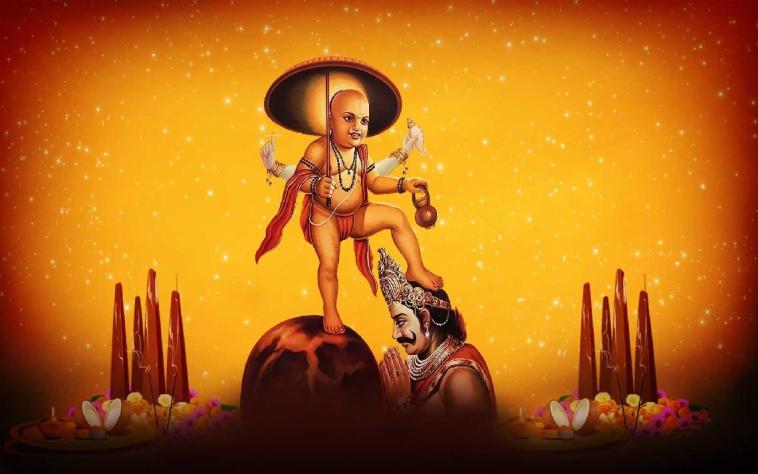
Some critiques of the AIT/AMT take umbrage to the instrumental use of AIT/AMT by Brahmins/Kshatriyas to justify the Varna system and also by Dalit/Bahujan activists to “Smash” Brahmanism and thus by proxy Hinduism. The annual Durga-Mahishasur controversy and the Vaman-Bali Onam flamewars keep the controversy in the news.
The Eurasian-like ancestry (ANI ancestry) in India (Both Steppe pastoralist and IVC-like) is mostly correlated with the Varna status. The somewhat ethnic nature of the Varna hierarchy is unpalatable for modern Hindus to digest. However, it is important to note that such ethnic divisions in classes are commonplace around the world. While it is fair to assume in pre-modern times the interactions which led to the great mixing of the Indian subcontinent (2000BCE to 0AD) had violence and exploitation cooked into them, the reasons also could be explained without the worst subjugation imaginable.
Anyways it’s a fool’s errand to indulge in finding conclusive evidence in pre-literate history, I would argue that the question of Aryan Migration is irrelevant to this oppressor-oppressed narratives. From outsiders’ accounts, native sources as well as genetics, I think it is fair to conclude that after initial intermixing, a group of people who happened to have a higher proportion of certain ancestry (genetic/ cultural) dominated another set of people – either organically or systemically. Razib Khan makes this point very succinctly in his substack.
However, to this uncomfortable conclusion, it does not matter whether the ancient Arya expanded from the Kazakh steppes or the Punjab region or even Anatolia for that matter. The boundaries of Aryavarta in the subcontinent were themselves always expanding into their margins, and only after the complete expansion does the notion of Sacred geography become important; not before. Politically this point will be made either honestly or dishonestly by westerners and political opponents of Hinduism (not just Hindutva) – but there is space for a nuanced counter without indulging in ad-hoc denial which logically may be irrelevant. Even the most dogmatic adherents of sacred geography have to reflect that there was a time the geography wasn’t sacred.
Dravidian nationalism:
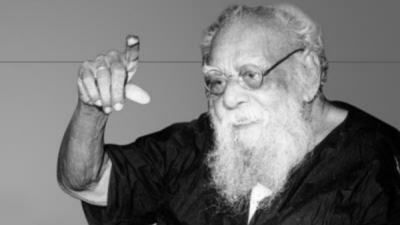
While most of the points made in the above passage are relevant to the question of Dravidian nationalism, its (Dravidian nationalism) basis is shakier than the Varna ethnic division. This point is made wonderfully by Razib khan here. Most probably IVC exodus had begun before the arrival of Steppe pastoralists (Arya in my opinion), so at best the pre-history can fit a model of subjugation of peninsular natives (AASI adjacent) by the farmers and pastoralists who left the collapsing IVC southwards. As mentioned before, it is a mug’s game to impose oppression Olympics on pre-history, but if it has to be done then the one mentioned in the previous line makes more sense than the Aryan-Dravidian dichotomy. The model that two elite cultures were interacting, integrating, subjugating, and co-opting natives – one in the north and one in the south while interacting with each other along the periphery seems to be the parsimonious explanation. In the mood of speculation, I would add that there was another elite culture in the mix – which Michael Witzel now calls – Kubhā-Vipāś substrate (which he earlier called Para-Munda) – corresponding to the remnants of the IVC in the North.
Islam and Christianity:
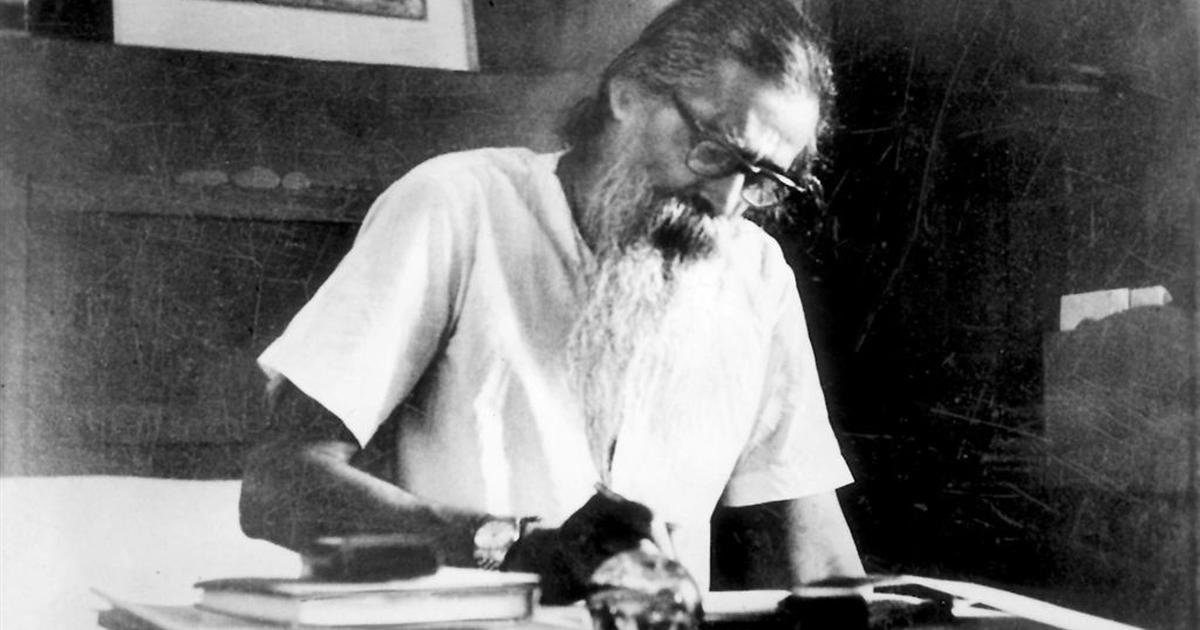
Arguably this remains the biggest reason Hindutva remains politically opposed to AMT. The initial framing of Hindutva by Savarkar and Golwalkar made use of the insider-outsider analogy. While Savarkar saw no dissonance between his framing of Hindutva and Aryan migration, it was the religiously dogmatic and un-intellectual-ish Golwalkar whose framing of Hindutva rested on Hindus being native to the subcontinent since the beginning of time. Armed with the AIT/AMT the opponents of Hindutva have attacked this particular point scornfully in Golwalkar’s framing as a slam-dunk. Examples of this being this particularly transparent framing by Shoaib Daniyal. (given that he knows linguistics and must know that Rigvedic Sanskrit was most probably spoken in India around the same time).
However, this point shouldn’t matter for the intellectual foundation of native Indian thought (Hindutva ++) because.
- One of the most common points made by AMT skeptics is that the Rigveda doesn’t clearly remember some older homeland. This point alone is enough to deny the Hinduism is foreign to the subcontinent argument. Firstly what we understand as Hinduism today is far different from the religion of the Rigvedic Aryans. Hinduism cannot at the same time be a British invention as well as imposed 3 thousand years ago by invading Aryans.
- On the contrary viz. Turkic invaders who became rulers of the North and Central subcontinent were evidently aware of their foreign stock. Before most of the north Indian dynasties could go native, they were replaced by newer invaders for centuries. The Portuguese who violently brought Christianity to the coasts of India were equally sure of who they were and who they were not. As with the Parsis, Cochim Jews and British.
- As I have argued before, current Hindu-Muslim faultlines have less to do with what the medieval invaders did and more what the Pakistan movement achieved and how Muslim intransigence and Hindutva consolidation have progressed since independence. This is a contested opinion and I plan to handle it sometime later in a separate post.
- While Aryas and Medieval invasions remain contested and debated hotly, the dozen or so invaders who invaded post the Vedic period (barring Alexander) are not even footnotes in the discourse of the day. This brings me to the more important differentiation – data becomes sparse we go back and wrt to the Aryan migration we are truly holding at straws for building our narratives. Ex – the alleged anti-idolatry sentiment in the Rigvedic Aryans (wrt to some smashed Proto-linga from old Indus sites) is so flimsy and incomparable to the medieval invaders (more importantly the iconoclasm of the later kind remains as relevant today as it did in the medieval time)
Ideally in a modern democracy, all citizens have equal rights no matter whose ancestors came into the geographical entity when, but some framings of Hindu Rashtra (not all) make Muslims and Christians lesser citizens. While this yardstick continues to be used, arguments and rebuttals on this dubious point will continue (but it need not be).
Issues with academic chronology:
Unlike most states who have founding myths in historic times (barring China, Egypt, and Iran I guess), the foundations of the Indian civilizational state go back well into the Bronze-Iron age. The historic timeline of Agriculture (till IVC) 3500BCE -> IVC (2000BCE) -> Vedic period (1500-700 BCE) -> MahaJanapada period (700-300 BCE) are at odds with most chronologies popular among Hindus (even Jains for that matter). While the absolutely ludicrous timelines presented by Nilesh Oak have widespread support, it is far beyond my ability to address them. However, the academic dating of Indian history makes the Rigveda a 3500-year-old text at most, the events of Mahabharata (if they really occurred) as a 3000-3500 -year-old event. I guess Hindu traditionists (not necessarily Hindutvavadis) cannot digest the inconsistencies of traditions with academic history. While this appears to be an insoluble issue, I think like scientific oriented Christians and Jews who no longer hold the Book of Genesis as a historical text, Hindus can also look at their traditions from a rational lens (though currently where the truly scientific lens differentiates from the colonial lens is contested). However, this is easier said than done as the parallels between Creationism and Indian traditions (especially Itihasa) are unfair (as especially young-earth Creationism is way easier to dismiss).
In most of the above points, the Aryan debate remains irrelevant to the political narratives if one faces them with intellectual honesty, maybe except in the case of timelines. Ex: Brits whose self-conception goes back to the Magna Carta at most, don’t care whether Romans invaded and occupied Celtic Britain. Neither do they care about the Viking invasions or Norman conquests (as much). Unfortunately, Indian self-conception as a civilizational state goes back further than the Muslim invasions. Hence to counter the inconvenient history, the pre-historic events attested in one of the earliest texts of human history remain contested. Also the “we are a 5000-year-old civilization” drum cannot be beaten endlessly if Rigveda is dated to 3500 years ago – the date is irrelevant – the idea of the antiquity of ancient texts is not. It is the notion of eternal or Sanathan Dharma that trumps considerations, whose genesis is lost in the mist of time.
Postscript:
This essay is not an attempt to convince the ideologically dogmatic about the intellectual irrelevance of the debate but to convince those who try to be intellectually honest on both sides to rethink the linkages of politics to this debate.
Also, the AIT/AMT debate is not politically used against Jainism and Buddhism – whose texts also had the Arya-Mleccha distinction. Indra continues to be a Buddhist/Jain deity even outside the subcontinent.
Major Amin’s Review: 1965, A Western Sunrise. by Shiv Kunal Varma
1965 – A Western Sunrise -Indias War with Pakistan by Shiv Kunal Verma Reviewed by Major Agha H Amin (Retired)
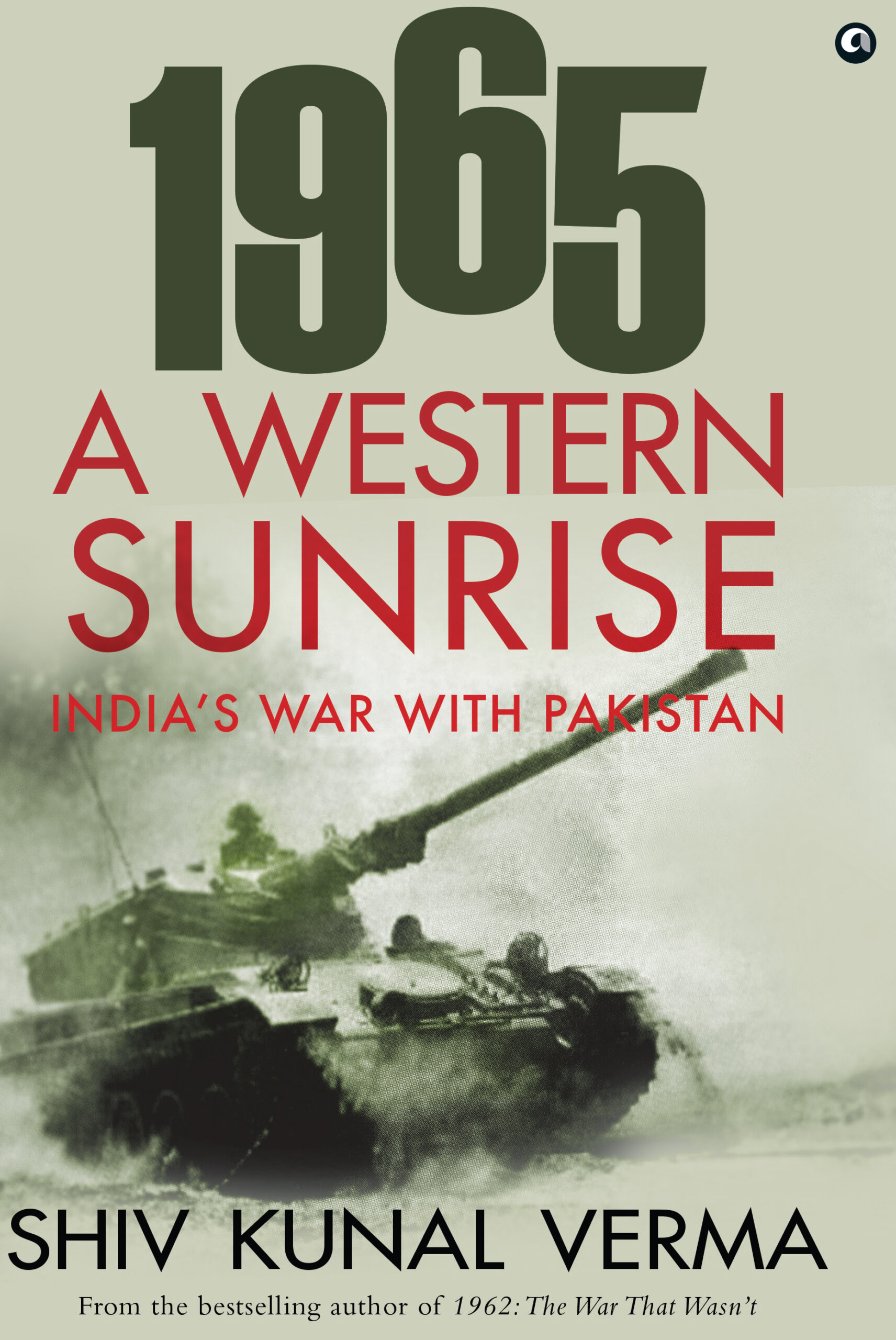 September 2021
September 2021
- DOI:
- 13140/RG.2.2.21404.00645
- This is a very interesting new addition to books on 1965 war. The writer gives very interesting background details to each relevant person or subject , though these did not interest this scribe as a military reviewer. Overall, a good effort but it does contain several errors:
The authors assertion on page-43 that 6 Infantry brigade was an independent brigade is not correct as this brigade was a part of 8 Division.
On page.99 the writers assertion that 19 Baluch (Special Services Group or SSG) was formed with 7/10 Baluch as nucleus is TOTALLY INCORRECT . 7/10 was renumbered 15 Baluch while 17/10 Baluch was later renumbered 19 Baluch or the SSG.
On page.106 and 107 the authors undue praise of then Brigadier Harbaksh Singh’s advance towards Muzaffarabad in the 1948 Kashmir war is highly disputable as per both Pakistani and Indian accounts. eg Pakistani official history published in 1970 stated that on reaching Tithwal, which was defended by a weak infantry company, Brigadier Harbaksh Singh ordered a two day halt and thus lost a golden chance to change history and possibly threaten Muzaffarabad. In these two days Pakistan Army reinforced Tithwal with a brigade. Colonel Achutan Singh of Indian Army in a recent article published in Indian Defence Review analysed in detail Harbaksh Singhs incompetent siting of Indian defences of the Chunj position as a result of which Indian Army lost they key Chunj ridge and was pushed on defensive at Tithwal and driven out of Pir Sahaba Ridge. Incidentally the Pakistani success in the attack on Chunj was thanks to the role played by Major Sloan, a British officer who managed to transport a medium gun over the river using a pulley, and who later died in action and was buried with full military honors in Pakistan. Continue reading Major Amin’s Review: 1965, A Western Sunrise. by Shiv Kunal Varma
Browncast: Omar Ali on Pakistan, Myths and Realities
Another BP Podcast is up. You can listen on Libsyn, Apple, Spotify, and Stitcher (and a variety of other platforms). Probably the easiest way to keep up the podcast since we don’t have a regular schedule is to subscribe to one of the links above!
In this podcast we reverse positions and guest blogger Maneesh Taneja interviewed me (Omar Ali) instead of the other way round. We talk about the usual stuff, the ideology of Pakistan, partition, why the army rules Pakistan, how the India-Pakistan thing is likely to evolve, and suchlike. Just a casual conversation.
Errata:
- I said at around the 40 minute mark that the Indian army at partition was around 50% Muslim. That is not correct (thanks to @genionomist for pointing this out on twitter). It was about 33% Muslim, 33% Sikh and 33% Hindu.
- I said Pakistan officially teaches pride in the Indus valley civilization and then jumps to Mohammed Bin Qasim. I forgot to mention that we DO own the Gandhara civilization, but we present it as Buddhist, almost never as Hindu or generically “Indian”. In that sense, it is used to buttress the assertion that Pakistan was never really too “Indian”. And I did not get into this, but left-liberal types who reject or question the Two Nation theory then insist on a very sharp and black and white British 19th Century type vision of evil Aryans invading “our real people”, the heroic Dravidians. Win some, lose some 😉
I promised in the podcast that I would also post links to some articles and books I believe may be relevant. So here goes:
- Pakistan, Myths and Consequences. My article in “Pragati” about the ideology of Pakistan and its consequences for Pakistan can be found here.
- Podcast with Venkat Dhulipala can be found here.
- A link to Venkat Dhulipala’s book “creating a new Medina“, which I think is an excellent introduction to how Pakistan was imagined by many (not all) of its creators.
- Abdul Majeed Abid on the Objectives resolution, adopted by the Pakistani constituent assembly as the basis for a future constitution of Pakistan, can be found here.
- Martial Race Theory, myths and consequences. This article by Major Amin sheds light on the genesis of the Pakistan army and its self image.
- Our fellow blogger “the emissary” views on India’s Islam.
- Dr Hamid Hussain’s summary of the Kashmir problem is here.

Kashmiris are just generic North Indians, and there is no difference between Pandits and Muslim Kashmiris
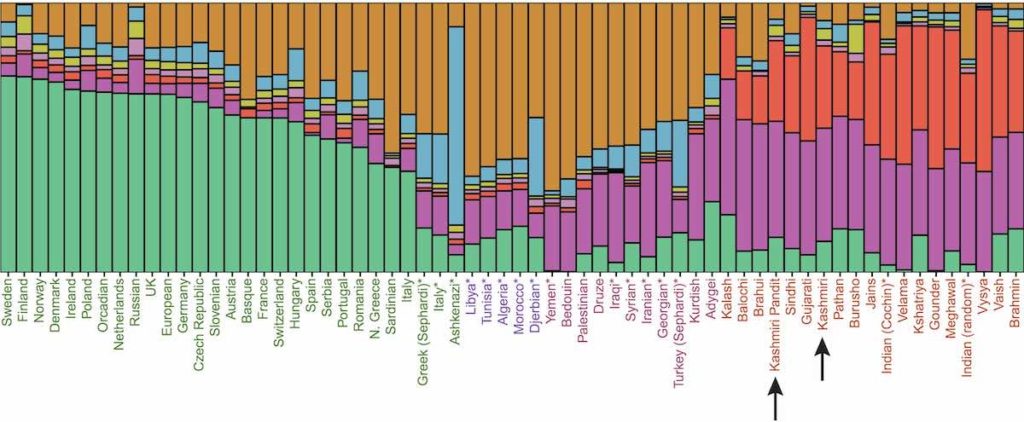
Since people ask me this I have to post this now and then. We have genetic data. So in short order
1) Kashmiris are like other people in the Northwest of India. They are not enriched in steppe ancestry, at least compared to many Punjabis or Brahmins from the Gangetic plain
2) There is no genetic difference I can see between Pandits and Kashmiri Muslims, indicating to me that one distinctive aspect of the Vale of Kashmir in comparison to the rest of the Indian subcontinent is that it does not exhibit the jati-varna structure common across the subcontinent
3) Some researchers and genetic genealogists have found some Tibetan admixture at low levels among Kashmiri Muslims and Pandits
4) It is probably correct that elite Muslims have low levels of Central Asian and Iranian ancestry, though that’s harder to detect than Tibetan background
Academic freedom, Hinduism, and the end of the age
We are at a tipping point,” said Rohit Chopra, one of the conference organizers and a professor of communication at Santa Clara University. He said the issue went beyond the conference. “It’s about the principles of freedom of expression, academic freedom and of a university being a space where people can speak for the most vulnerable.”
The online conference, Dismantling Global Hindutva, included panels on the hierarchical caste system, Islamophobia and differences between Hinduism the religion and Hindutva the majoritarian ideology. The event was co-sponsored by departments of more than 40 American universities, including Harvard and Columbia.
The whole piece is a mishmash. First, let’s stipulate that many Hindu activists are unsophisticated, illiberal, and nasty pieces of work. But someone like Suhag Sukhkla is none of those things. So the article focuses more on the former than the latter because the former is sensationalistic. Yet, many of the reported threats are credible to me because I myself have received various forms of these invectives from 15-year-old masturbaters in India on Twitter (though a little surprised adults behave like this too). But beneath the bluster and thuggishness, there’s a legitimate grievance. Imagine an academic conference on Islam that spotlighted its hierarchical gender system, religious dominionism, and the differences between Islam as a culture and Islam as a religion. Such a conference wouldn’t happen because academics would fear Muslim outrage and violence, and, they see Muslims as subalterns and marginal, and so above criticism.
The first issue illustrates why many Indians and Hindus are behaving like this: they’ve seen the heckler’s veto work on weak-spined academics before. They’ve seen it work for Muslims, and they’ve seen it work for left-wing activists. When Charles Murray was physically attacked at Middlebury it got results. Murray really can’t speak in public anymore at such venues because the cost of security would be prohibitive. The second issue is that academics don’t really believe in freedom of expression anymore, they believe in critiquing the powerful. They’re activists. Ideologues. What the Hindus are doing is turning the master’s tools against the master when they leverage identity politics and their status as people of color. The academics, who don’t really believe in freedom of expression, respond with most gusto when they try and smear Hindus by connecting them with Nazism and argue for their hegemonic status vis-a-vis Muslims in the subcontinent. It’s all who/whom here.
I believe in dispassionate analysis and Epoche. Many Hindu activists and believers are wrong on many things. And I tell them so when I think this. But I don’t do this because I want to “deconstruct Hinduism.” I don’t really care that much about Hinduism, or Islam, or any religion. I want to know what’s true. When humanities scholars gave up on the truth, they gave up on the high ground from which they could defend their viewpoints as part of free speech. This is the world they created. You told people that truth is subordinate is power. Your enemies now seek power to force you to speak their truth.
Open Thread – 10/02/2021 – Brown Pundits
My Substack post on caste is finally up. Thanks for your patience.
The podcast released three episodes in three days. An interview with Wahid Majrooh, Former Minister of Public Health of Afghanistan. Another with Pashtana Durrani, an Afghan activist. And of course the one with Shazia Ilmni. Just subscribe on Apple and Stitcher.
Review: Hell! No Saints in Paradise
AK Asif’s debut novel (available on Amazon,) (also available on Amazon India) mixes dystopian science fiction, sufism, politics, humor and Salafist Islam to create a stunning and unexpected joy-ride through post-apocalyptic Pakistan in 2050. Of course it is no longer called Pakistan (there being no P in Arabic), it is now called Al-Bakistan, and it is ruled by a Khalifa who established law and order after the proletariat rose in revolt and decapitated the ruling elite in a paroxysm of rioting and holy war a few years earlier.
M.J. Akbar’s Tinderbox & Aag ko Pani Ka Bhay: Thoughts on Indian Sub-continent.
A close childhood friend, a passionate and active supporter of Aam Aadmi Party-whilst he retains his deep personal and family linkages with the Congress party- his grandfather served as a minister in a Congress run Madhya Pradesh government in the 70s, is a regular sparring partner on arguments around ideological moorings of Modi Sarkar and its performance.
A comment he made in a recent argument, he was explaining to me why the opposition in India behaves the way it behaves and what is the opposition’s role, quoted a famous Hindi adage- Aag ko Pani ka bhay (The fear of water should be inculcated in every fire). Coming from someone who has been extensively involved in political mobilization and has had a close view of governance in this country, the comment is a remarkable summary of the sub-continent’s politics over the last 100 years.
The comment made me once again read M. J. Akbar’s seminal work on Pakistan- Tinderbox the Past and Future of Pakistan, relook at the structure of modern Indian state, its institutions and the incentives that drive the political parties in India.
Akbar’s book presents the intellectual foundation of the idea of Pakistan, the political land scape that nurtured the idea making the idea a potent force, eventually leading to the partition on the sub-continent on religious grounds and founding of an Islamic nation.
Akbar submits that the fall of Mughal empire and with the emergence of British as the de-facto rulers of the sub-continent, the Muslim elite that that ruled for over five hundred years felt politically disenfranchised and powerless.
One of the ways in which the elite responded to this defeat was by nurturing the idea that Akbar calls- Theory of Distance. He credits the origin of this theory to Shah Walliullah a pre-eminent Islamic theological intellectual of 18th century. The theory claimed that the Muslims were suffering, because the difference between believers (the Muslims) and infidels (the Hindus) had blurred in India. They had abandoned the purity of their faith and forgotten they were a distinct entity.
As the British consolidated their rule over India in the late 18th and the 19th century, their policies encouraged this distinction and the Muslims increasingly felt the British were discriminating them vis-à-vis Hindus.
The British on their part, during the years in power, saw the Indian sub-continent not as one Nation but an amalgamation of multiple groups each with its own sectarian identity.
Their experience of 1857 made them consider Muslims as a political force that posed the gravest threat to their rule.
In the first half of the 20th century, they used the force of Muslim identity as a counter-weight to the nationalist movement which was primarily led by Hindu leaders.
The British stoked the fear of a numerically dominant Hindus will deprive Muslims of any power sharing. Starting with separate electoral colleges for Muslims, British support for ‘Theory of Distance’ culminated in Two Nations theory with partition and creation of Pakistan.
The British Raj ruled by the principles of pitting caste and sectarian identities against each other and using these identities bulwark against the freedom movement. Their encouragement and support of the Two Nations Theory has left a lasting legacy in the sub-continent.
Post 1947, the two nations have followed different trajectories.
Pakistan has slowly, steadily and surely moved in the direction that was envisioned for it, by founders of its idea. A state founded, as Akbar writes in his book- not only as a separate nation from Hindu India but also a laboratory and fortress of Islamic faith.
It’s laws today discriminate its citizens on religious grounds- only a Muslim by law can become its Prime Minister or President. It has enshrined Islamic practices in its constitution and its once Westernized Army, its most dominant institution, now has Faith, piety, Jihad for the sake of Allah, as its motto.
Although Islam could not hold the country together, its eastern wing seceded in 1971 to become Bangladesh, it has continued it march towards a homogenous Islamic country. Religious minorities made up for 31 % of Pakistan’s population in 1947, today they make for 4% of it’s population. Its current prime minister aspires to make Pakistan a modern-day version of Riyasat e Medina.
Akbar’s book introduces us to actors who gave birth to the ideas of Muslims as a separate nation, the need for an Islamic republic in the sub-continent and those who fought- politically and violently for fulfilment of these ideas.
It is unfortunate that we don’t read about these men- they are all men, in our school text books. Ideas of Walliullah, the Ulemas of Deoband, Maulana Madudi and Zia ul Haq have shaped the destiny of the sub-continent and continue to drive the actions of those running the countries in the sub-continent.
The book, well researched and mercifully does not read like a Phd thesis, fills this space remarkably. My one quibble with the book would be that it does cover the role played by Hindus in the emergence of two nations theory. The most towering leaders of the freedom movement were Hindus but they were avowedly secular and considered Muslims as equal stakeholders. Where and why did they fail in garnering mass support for their ideas of United Secular India.
India inherited the Raj in 1947. It opted for the Westminster style, first past the post model for it legislative function. Its bureaucratic service is modelled on the lines of British era Indian Civil Service and its police force even after 75 years of Independence follows the procedural manual laid down by the British. The Indian state continues to enforce The Indian Penal Code, enacted by the British in 1860 and India’s Supreme Court functions in English. Its successive governments not only inherited, and have largely preserved the British era state structure, they also inherited India’s sectarian fault lines.
Setting it up as a multi-party democracy, the founders of the modern Indian republic continued to see India the way British saw it- a union comprising of multiple religious and geographical identities. Shashi Tharoor captured the idea of the Indian Republic pithily when he compared India with a traditional Indian meal called –Thali.
A Thali is a traditional India meal comprising of an array of dishes in uneven quantity with each dish bringing its own distinct taste and flavor; a sum of its parts a Thali makes for a delicious wholesome meal with each dish contributing to the culinary experience.
The problem with looking and treating a country like a Thali whilst governing it as boisterous electoral democracy is that sooner than later politics of identity will kick in. Each sub-group will look to the trump its own interests over the interests of the larger group as a whole. Its design will make sure that the incentives of the politicians representing each sub-group, will always be aligned with achieving optimum output for the sub-group that they represent even if those goals are achieved at cost of the largest group- the nation state. While there is merit in the arrangement, why should the size of the largest group be allowed to dominate the smaller units, a side effect of this approach is that it leads to the politics of – Aag ko Pani ka Bhay.
In the absence of a unified Indian identity, crafted in a melting pot with its religious and geographical diversity as ingredients, we as a nation always end up playing the balancing act. Let us guard against the majoritarian tendencies of its majority community by vesting its religious and cultural institutions in the hands of a secular state. Let the dominant religious minority have its own personal laws otherwise it will feel alienated. Let us split the state purse on religious lines as a mark of our commitment to building a nation that treats all religions equally. Let us ride roughshod over rights of the real minority- the individual for the sake of a group’s sentiment. We have ingrained in our laws all these principles.
Design a state structure that looks as Indians first on what are their religious beliefs and then their caste denomination. Give them a polity that will thrive on amplifying their differences and pitting the fear of one identity against the other. Fail to build state capacity that can be a neutral arbitrator of conflicts between these identities or can forcefully maintain law and order and you will end up with the polity thriving, on politics of ‘otherization’ of the ideological and political opponents; and one that challenges state’s monopoly over violence repeatedly. Instead of supremacy of the law performing the role of Pani to the Aag of anarchy or the will of the people acting as the Pani to the Aag of governments not delivering, politicians get to play one identity against the other.
The Indian sub-continent has been carved into three separate nations in the last 75 years in an attempt to balance Aag and Pani. While two of three nations are forging common national identity, for a better or for worse time will tell, the largest of three continues to stumble along. How soon its people come together and forge an identity that subsumes their smaller group identities- one wonder if its citizens even want to do that, will shape the destiny of the sub-continent in this century.
Browncast – Shazia Ilmi BJP National spokesperson

Another BP Podcast is up. You can listen on Libsyn, Apple, Spotify, and Stitcher (and a variety of other platforms). Probably the easiest way to keep up the podcast since we don’t have a regular schedule is to subscribe to one of the links above!
In this podcast Mukunda and I talk to Shazia Ilmi – BJP National spokesperson about Indian politics, Muslims in Politics and Society and a lot more.
